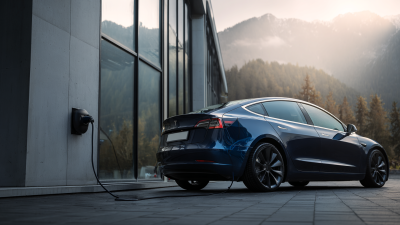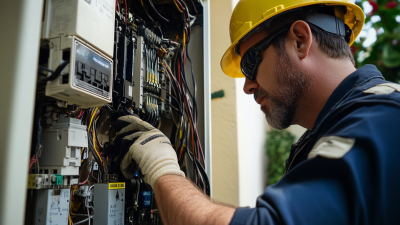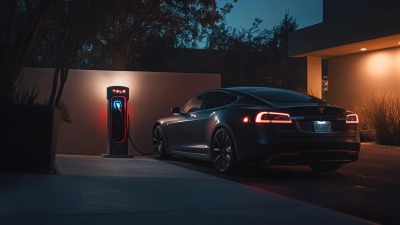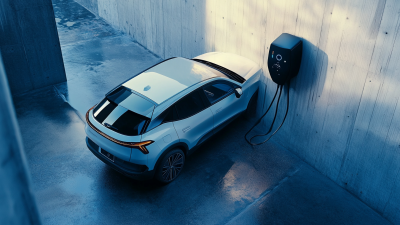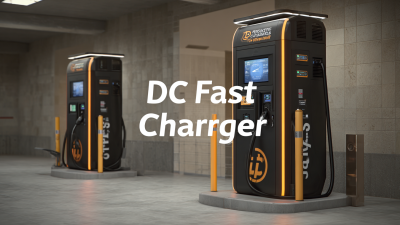As the world increasingly pivots towards sustainable energy solutions, the electric vehicle (EV) market has witnessed unprecedented growth, with projections indicating that there will be over 300 million electric vehicles on the road by 2040, according to the International Energy Agency (IEA).
Central to this revolution is the ingenuity of EV Wallbox, a pioneering solution shaping the future of electric vehicle charging. With the global EV charging market anticipated to reach $27.7 billion by 2027, driven by rising consumer demand and government incentives for EV adoption, the need for efficient and accessible charging infrastructure has never been more critical.

EV Wallbox integrates cutting-edge technology with user-friendly designs to not only simplify the charging process but also enhance the overall EV experience. As we envision tomorrow's transportation landscape, it's clear that innovations from companies like EV Wallbox will play a pivotal role in making electric vehicle charging accessible, efficient, and sustainable for everyone.
The rise of electric vehicles (EVs) marks a transformative era in transportation, fundamentally altering how we approach mobility. As we move towards a cleaner, greener, and more sustainable future, the adoption of EVs has become increasingly vital. In 2022, global electric vehicle sales exceeded 10 million, indicating that 14% of all new cars sold were powered by electricity. This exponential growth underscores the potential of EVs to decarbonize road transport, a sector responsible for over 15% of global energy-related emissions.
Embracing electric vehicles not only reflects a shift in consumer preferences but also sparks significant developments in distribution networks and infrastructure. Policymakers and industries are recognizing the importance of supportive frameworks, with incentive programs being refined to encourage further adoption. By investing in charging infrastructure and addressing market dynamics, we can expect a dramatic increase in the market share of EVs, potentially exceeding 63% by the mid-2030s. This transition is set to shape tomorrow's mobility landscape, with advancements in technology and policy paving the way for a cleaner, more sustainable transportation ecosystem.
The rapid evolution of electric vehicle (EV) charging technology is central to the future of sustainable transportation, and Wallbox is at the forefront of these advancements. Their recent innovations highlight an ongoing commitment to developing solutions that enhance user convenience and charging efficiency. A notable example is the launch of the Liberty CodeConnect™ chargers, which provide a cost-effective option for straightforward EV charge station management, making it easier for both businesses and individuals to access EV charging infrastructure.
Moreover, Wallbox's introduction of the Quasar 2, a bi-directional charger compatible with select EV models, showcases the future potential of vehicle-to-home (V2H) technology. This technology allows EVs to not only draw energy but also to supply power back to homes, thereby contributing to energy conservation and resilience. As more consumers switch to electric vehicles, the demand for innovative charging solutions will only continue to grow, making Wallbox’s technological advancements crucial in shaping the landscape of the EV market.
As electric vehicle (EV) adoption continues to accelerate, enhancing user experience in EV charging has become paramount. Wallbox is at the forefront of this change, leveraging innovative technologies to provide seamless and user-friendly charging solutions. With the global electric vehicle charging station market projected to grow from approximately $45.59 billion in 2025 to around $221.18 billion by 2034, the demand for enhanced user experiences is critically underscored. Wallbox’s commitment to simplifying the charging process through intuitive interfaces and smart energy management is setting new standards in the industry.

Tips for an enhanced user experience include leveraging virtual power plants (VPPs) for better energy distribution and potentially lowering costs. Wallbox's recent launch of VPPs in various states showcases how advancements in infrastructure can translate to user benefits—optimizing charging schedules and making renewable energy integration more feasible. Additionally, user preference analysis indicates that tailored pricing schemes and flexible charging options are becoming increasingly important, indicating a shift towards personalized charging experiences that align with individual needs.
Investing in smart charging solutions also stands out as a crucial tip for EV users. As highlighted by the latest advancements in charging technologies, users can benefit from enhanced features such as real-time data access and improved operational management systems. By focusing on these critical aspects, Wallbox and its contemporaries are not just shaping the future of charging infrastructure; they are revolutionizing the way users interact with their electric vehicles.
As the world increasingly shifts towards electric vehicles (EVs), the sustainability of charging solutions becomes a pivotal concern. According to a report from the International Energy Agency (IEA), EV sales reached a record high in 2022, with over 10 million units sold globally, contributing to a significant reduction in carbon emissions. However, the environmental impact of charging these vehicles remains crucial to the overall sustainability equation. Charging infrastructure, particularly solutions like the Ev Wallbox, is designed to minimize energy consumption and promote the use of renewable resources.
The environmental benefits of effective electric vehicle charging are particularly noteworthy. A study by the Union of Concerned Scientists estimates that, on average, EVs produce 50% less carbon pollution than gasoline-powered vehicles over their lifetime. By integrating smart charging technologies, such as those offered by Ev Wallbox, consumers can optimize their charging times to coincide with periods of high renewable energy output, thus further decreasing their carbon footprint. These advancements are not merely technological feats; they represent a significant step towards a greener future, highlighting the vital role of sustainable charging solutions in the global transition to electric mobility.
The future of electric vehicle (EV) charging infrastructure is poised for significant growth, with the global onboard charger market projected to reach $5.48 billion in 2024. This market is expected to expand from $6.93 billion in 2025 to an impressive $22.89 billion by 2032, reflecting a robust compound annual growth rate (CAGR) throughout the forecast period. This surge is primarily driven by the increasing adoption of EVs, spurred by government incentives and a growing consumer base.

As the demand for EVs rises, the charging infrastructure is evolving rapidly, particularly in regions like China where the total sales of new energy vehicles (NEVs) could exceed 16.5 million units by 2025. The charging station market alone is predicted to reach $23.8 billion in 2024 and soar to $81.29 billion by 2037. This growth highlights the necessity for innovative solutions in charging technology to meet the demands of an expanding EV market.
Tips:
1. To prepare for the EV revolution, consider investing in more convenient home charging solutions that can enhance your daily driving experience.
2. Stay informed about local and global policies that promote electric vehicle adoption, as these can influence your vehicle choice and charging infrastructure availability.
